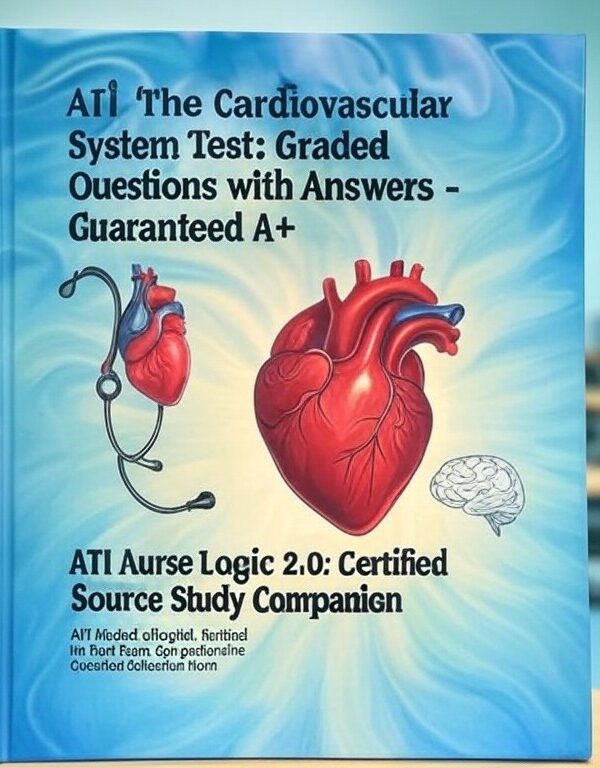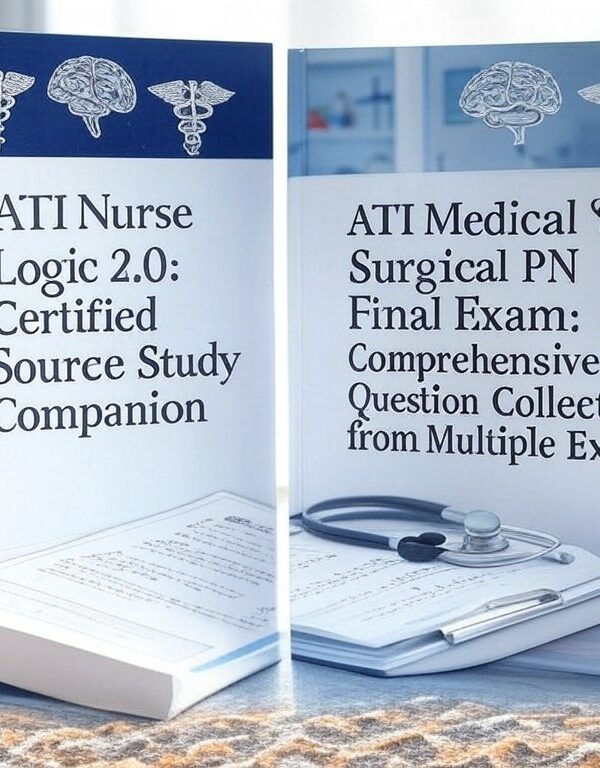-
150 real BIOD-152 exam questions with expert-verified answers
-
Comprehensive review of essential biology topics: anatomy, physiology, and more
-
Proven strategies to enhance test-taking skills and confidence
-
Updated 2025 content aligned with BIOD-152 course standards
-
Includes detailed explanations for deeper understanding
-
Perfect for students seeking top grades in their final exam
-
A+ rated guide for academic excellence
Preview
1. Giemsa staining is used to detect each of the following EXCEPT:
a. Neisseria gonorrhoeae ✅
b. Chlamydia trachomatis
c. Histoplasma
d. Malaria
Rationale: Giemsa stain is used to detect organisms such as Chlamydia trachomatis,
Histoplasma, and Plasmodium (malaria). However, Neisseria gonorrhoeae is typically
detected using Gram stain or nucleic acid amplification tests (NAAT), not Giemsa.
2. What STD is caused by a Gram-negative spirochete that can lead to paralysis,
blindness, and dementia?
a. Gonorrhea
b. Syphilis ✅
c. Chlamydia
d. Genital herpes
Rationale: Syphilis, caused by Treponema pallidum (a Gram-negative spirochete), can
cause severe systemic symptoms including neurological damage if left untreated.
3. Which of the following temperatures is commonly used to restrict pathogenic
bacterial growth in culture?
a. 37°C
b. 30°C
c. 25°C ✅
d. 45°C
Rationale: Pathogens typically grow best at body temperature (37°C). Culturing at 25°C
is a method used to limit the growth of pathogens while allowing non-pathogenic
organisms to grow.
4. True or False: The metabolism of a lipid-derived carbon atom will yield more ATP
than a molecule of glucose.
✅ True
Rationale: Lipids, especially fatty acids, are more energy-dense and produce more ATP
per carbon atom during metabolism compared to glucose.
5. Which of the following is/are true of Fungi? (Select all that apply)
a. Yeast is an example ✅
b. They are autotrophic
c. They are only unicellular
d. Cell walls are composed of chitin ✅
Rationale: Fungi include both unicellular (yeast) and multicellular forms. They are
heterotrophic, not autotrophic. Their cell walls are made of chitin, unlike plants.












Reviews
There are no reviews yet.